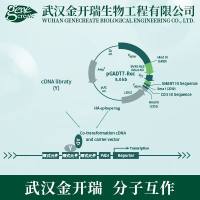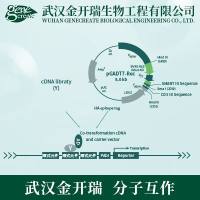cDNA文库构建方法
互联网
1. Identify appropriate celltype over-expressing corresponding gene.
2. Find out if transcription can be stimulated further eg by induction (note: the higher the mRNA level of the gene in question the easier it will be picked up in the screening procedure).
3. Extract total RNA and purify mRNA by oligo-dT cellulose chromatography.
4. First strand synthesis: this is done either in solution by annealing a free oligo dT-primer or a oligo dT tailed vector to the mRNA or more conveniently by annealing the mRNA to oligo-dT loaded magnetic beads which will greatly facilitate the subsequent recovery of the cDNA products. In either case the next step is a reverse transcriptase treatment which gives rise to a socalled DNA/RNA hybrid.
5. Oligo dG (or dC)-tailing at the 3'-end of the DNA strand in order to prevent self-annealing during step f); this minimizes the risk of loosing the 5'-end of the gene in the following step a prerequisitive essential for the construction of socalled full-length cDNA clones.
6. Second strand synthesis: this requires the prior removal of the RNA strand by either alkaline treatment or by RNaseH treatment followed by reverse transcriptase or E. coli DNA polymerase treatment.
7. If the first strand synthesis has been done free in solution (see above) then the ends of the DNA have to be manipulated before insertion into a cloning vector is possible; if the DNA is already linked to the vector then the molecule only has to be circularized via T4-DNA ligase treatment.
Please note that the various tailing procedures create a series of fragments with slightly variable lengths at both ends which is useful if translational fusion proteins (eg with LacZ) are to be constructed.
The advent of PCR has also had an impact on the cDNA cloning protocol in the sense that often 'anchored PCR' on the DNA/RNA-hybrid is carried out using conserved regions in order to amplify a certain type of cDNA species which can subsequently directly be inserted in the cloning vector.









